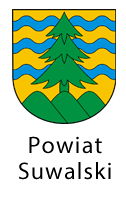History
A Historical Outline of Suwałki Region
The first settlers in today?s Suwalszczyzna (Suwałki region) were Yotvingians who settled here around 500BC. The Yotvingians inhabited the area from the neighbourhood of Wiżajny in the North to the Biebrza Valley in the South. The western border of their settlement was the belt of the Great Masurian Lakes District.
The Yotvingians formed a loose confederation based on family and tribal ties. The tribes were governed by councils of elders. They got united only during wars and plundering raids. It is the belligerent nature of the Yotvingians that brought eventually their destruction. Among those who fought against them were Poles, Lithuanians, and eventually, the Teutonic Knights who in 1283 delivered the final blow obliterating the Yotvingian community.
The most characteristic Yotvingian archaeological sites in Suwalszczyzna are the mounds with the remains of their fortifications. They are situated on the steep hills with flattened tops, known locally as ?the castle mountains?. The most famous and picturesque site in the Suwalszczyzna region is the Castle Mountain on Lake Szurpiły, other interesting sites of this type can be found in Jegliniec, Sudawskie and Osinki. Another interesting feature are the Yotvingian burial grounds, e.g. the burial mound in Szwajcaria.
After the annihilation of the Yotvingian tribes in the 13th century, for another two centuries the area of the Suwalszczyzna remained depopulated and overgrown with forests. The process of the colonization of the forests began in the 14th century with two waves of settlers: from the East and North-East - the Lithuanian, and from South-West - the Masovian settlers. Founded at that time were the manors that gave origin to the present localities of: Dowspuda, Raczki, Filipów, Przerośl, Bakałarzewo and Wiżajny.
Intensification of the colonization processes in the Suwalszczyzna region started in earnest only with the arrival of the Camaldolese monks at the shores of Lake Wigry. The estates there became property of the monks thanks to the royal charter issued by king Jan Kazimierz in 1667. In 1694-1745, the monks built on the lake peninsula a church with a complex of monastic buildings. Thanks to the Camaldolese monks founded new settlements, wood-distilleries, brickyards, ore works and smelteries. They also founded the town of Suwałki. New methods of management were introduced in the forest economy. With the Third Partition of Poland, in 1796, the Prussian authorities confiscated the Camaldolese estates and the monks were resettled. Today, the post-monastic complex on Lake Wigry is one of the most beautiful monuments of history in the Suwałki land.
The final stage of the colonization of the remains of the big forests took place in the second half of the 18th century. The new arrivals in that period were the Russian Old-Believers fleeing from the religious persecutions of the tsarist regime.
During the whole existence of the Commonwealth of Both Nations, Suwałki region belonged to the Grand Duchy of Lithuania. In the period following the Partitions, it was occupied by Prussia for twelve years. The next stage of the region development was much more prosperous. The region was incorporated into the Duchy of Warsaw (1807-1815) and then into the Kingdom of Poland (1815-1832) and remained bound with Poland since.
During the World War One, the Suwałki land was a stage of heavy fights between the Russian and German armies. In 1915, the region was overtaken by the German troops which occupied it until 22 August 1919. Leaving the land, Germans handed it over to the authorities of the independent Lithuania. This led to an open conflict and fights between Poles and Lithuanians. Eventually, on the strength of the treaty signed on 7 October 1920 in Suwałki, the Suwalszczyzna region remained within the borders of Poland.
On the outbreak of the Second World War, the Red Army entered Suwałki on 21 September 1939 and in four days occupied the whole of the region. On the strength of the Russian-German treaty of 28 September 1939, the Suwalszczyzna found itself within the sphere of influence of the Third Reich.
The first cell of resistance in the Suwalszczyzna was the Provisional Council of the Suwałki Land founded in October 1939. It did not manage, however, to start any military activities as its members were betrayed, arrested and shot by the Gestapo. In the summer of 1940 there were active three new resistance groups. But, as a result of arrests in 1941, few of the groups' members survived the war.
On 23 October 1944, Germans were driven out of the Suwałki region by the Orshanskaya Infantry Division, part of the 3rd Belarusian Front.








